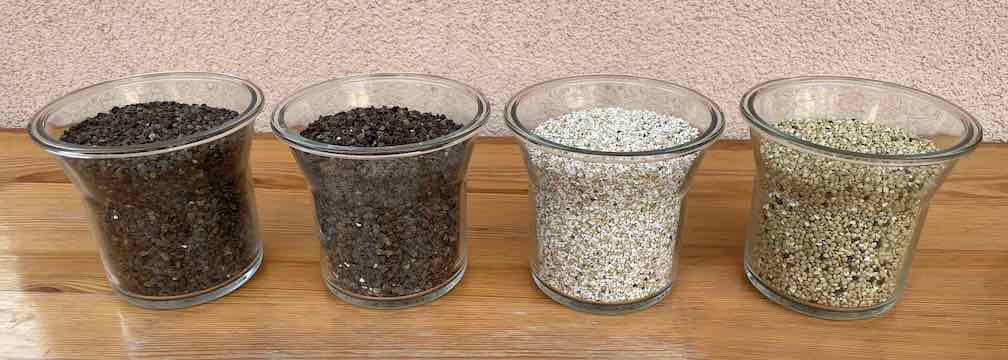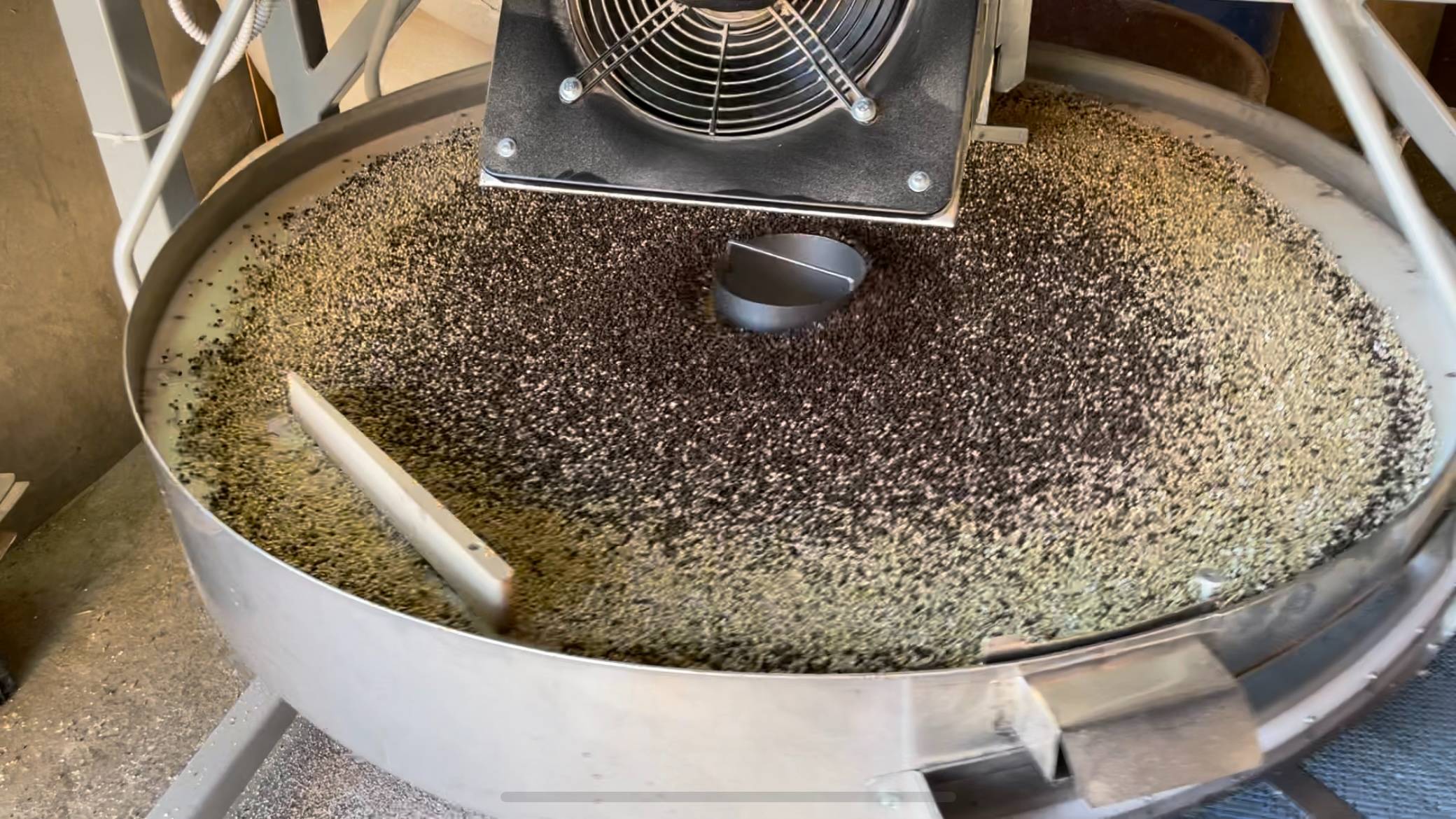Cold-Shelled or Steam-Shelled Buckwheat?
In industrial production buckwheat is shelled using a process that involves high-temperature steam. This is the most economical method for processing large quantities of buckwheat. However, for smaller farms this process may be inaccessible or they may not have any guarantee that they will get their own seeds back rather than a mix from other/larger buckwheat producers. Cold-shelling buckwheat allows farmers to create shelled buckwheat seeds and flower that they know was grown on their own fields. Additionally, research suggests that cold-shelled buckwheat also retains more nutrients.1,2
The Production Process of Cold-Shelled Buckwheat
The entire process of processing buckwheat from plants in the field to the seeds used in food goes as follows:
- Harvesting and Separation: Buckwheat is ripe when the seeds are dark brown or black. Nowadays, combines perform both the cutting of stems and the separation of the stems from the seed.
- Drying: After separation, drying follows. The buckwheat is loaded into dryers, which reduce the moisture content of the seeds. For mechanically (cold) shelled buckwheat, the seed moisture needs to be low (15% or less).
- Winnowing or Cleaning: Among the seeds obtained from the combine, there are usually many other unwanted particles that need to be removed before shelling. This process typically uses air to remove lighter particles from the grains, which are usually heavier.
- Shelling: The final step is shelling (also known as dehulling), where the outer husk of the buckwheat seed is mechanically removed. This step may need to be repeated to achieve high purity and quality of the buckwheat groats.
The result is buckwheat groats, which are small and have a light color. These groats can be further processed into flour or used whole in various dishes.
Our sheller (RF-125) allows you to perform steps 3 and 4 simultaneously. You can view the shelling process in the video below.

Nutritional Benefits of Buckwheat
Buckwheat is a highly nutritious, gluten-free seed that has been a staple in various cultures, especially in Russia, China, and Japan. Buckwheat is known for its impressive nutritional profile. It is rich in fiber and proteins, including all eight essential amino acids, making it a complete protein source. It is also rich in magnesium, zinc, iron, and B vitamins. Notably, buckwheat contains a high amount of rutin, a flavonoid that helps improve circulation and prevent cholesterol from blocking blood vessels.
Culinary Uses of Buckwheat
Shelled buckwheat groats have various uses in the kitchen. They can be cooked similarly to rice or barley and are often used in soups, salads, or as a base for breakfast dishes similar to oatmeal. Buckwheat flour is used to make pancakes, noodles, and various gluten-free products. For example, in Japan, buckwheat flour is the main ingredient in soba noodles.
Positive Economic and Environmental Impact
Buckwheat grows quickly, requires little pest protection, and improves soil health, making it an excellent crop for rotation. Economically, buckwheat can be a profitable crop for farmers, especially as the demand for gluten-free and nutritious grains increases worldwide.
Citations
- Živković A, Polak T, Cigić B, Požrl T. Germinated Buckwheat: Effects of Dehulling on Phenolics Profile and Antioxidant Activity of Buckwheat Seeds. Foods. 2021 Apr 1;10(4):740. doi: 10.3390/foods10040740. PMID: 33915814; PMCID: PMC8066582.
- Klepacka J, Najda A, Klimek K. Effect of Buckwheat Groats Processing on the Content and Bioaccessibility of Selected Minerals. Foods. 2020 Jun 25;9(6):832. doi: 10.3390/foods9060832. PMID: 32630374; PMCID: PMC7353638.
